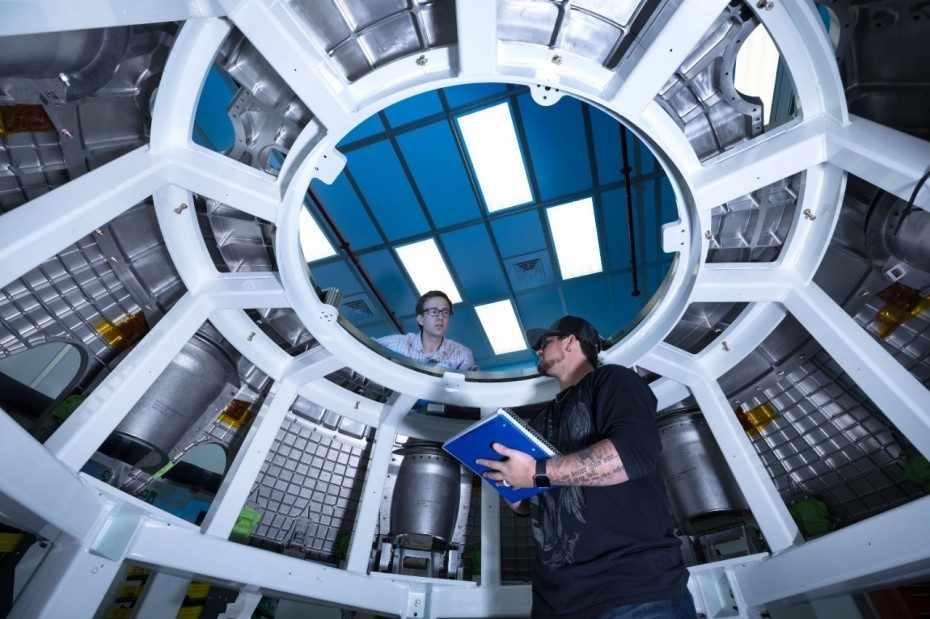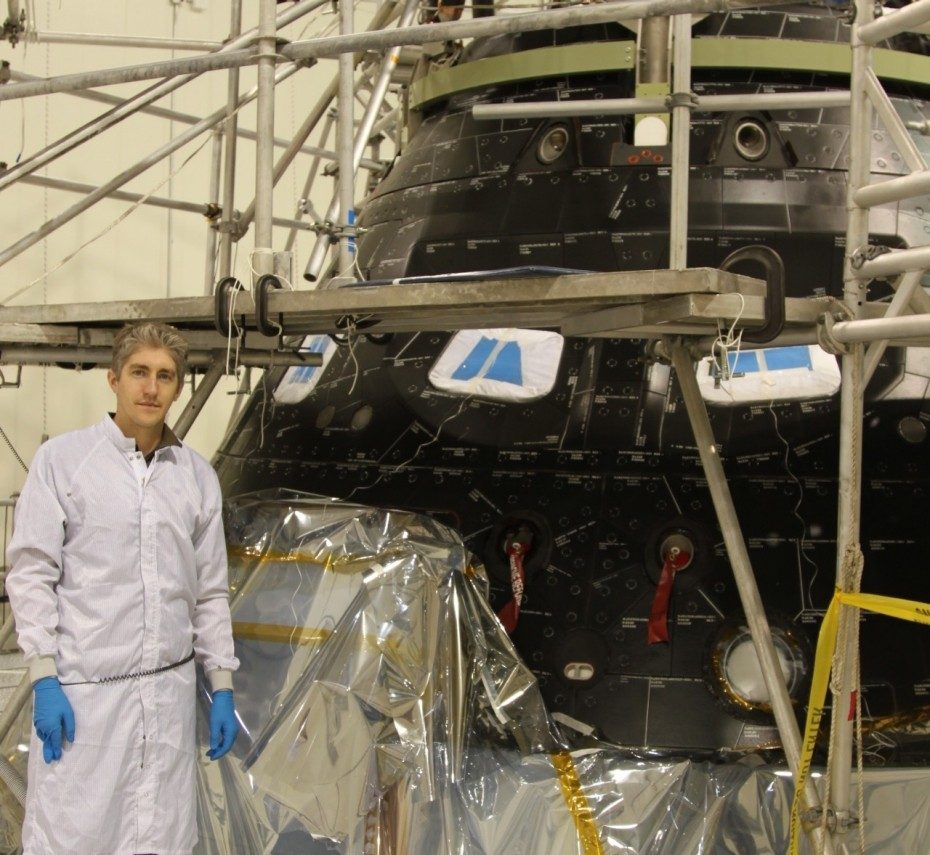On its next flight, Exploration Mission-1 (EM-1), Orion will come screaming into the atmosphere from the Moon at a whopping 24,700 mph. The aeroshell – composed of critical heatshield and back shell components – protects the capsule from harm during extreme conditions of re-entry.
Then, a series of 11 parachutes deploy 24,000 ft. above the ground and carry Orion to a soft water landing. However, in order for that to happen,a portion of the back shell must jettison off at precisely the right time, revealing the drogue parachutes and the three main, 300-lb. parachutes that slow Orion’s speed.
This piece of hardware is called the forward bay cover – and this crucial component for EM-1 was recently moved from its home in Denver to Orion’s Operations & Checkout Facility at Kennedy Space Center in Florida.
There, it will be integrated with Orion in preparation for the spacecraft’s 2019 test flight.

Parachutes aren’t built to withstand the 5,000-degree temperatures upon re-entry – they would be too heavy and unable to generate enough drag to slow the spacecraft down – so the forward bay cover protects them until just the right moment.
For Orion’s next test flight, the forward bay cover is made out of titanium – a material that is the apex of feather-weight and herculean strength. It’s perfect for spaceflight, where every additional pound is more costly.
The forward bay cover is affixed above the portion of the back shell that houses the parachutes, and it’s attached with fasteners controlled by a mechanism. At the exact altitude when the parachutes must deploy, the mechanism activates and the forward bay cover is jettisoned off in an impressive fashion.
During an actual test flight, this jettison is followed by parachute deployment, and Orion floats down and gently lands on the ocean’s surface.
As you can see to the right, the jettison mechanism is quick and powerful – generating thrust equal to 26,250 lbs. of force, launching the 1000-lb. forward bay cover away from the capsule. During separation, the cover accelerates to a speed of almost 30 mph in a little over half a second.
In the greater context of the landing sequence, the jettison and parachute deployment are the last major events to occur before splashdown. Once Orion lands on the ocean’s surface, inflatable up-righting bags deploy, orienting the capsule to a stable configuration for crew recovery. All of these are features of the spacecraft’s Landing and Recovery System.
The forward bay cover was born in the foothills of the Rocky Mountains, built at Lockheed Martin in Denver. At the beginning of this summer, the team carefully moved the component into its shipping container, and it was then sent to NASA’s Kennedy Space Center in Florida for integration with the full spacecraft.
Q & A With An Orion Engineer

Phil Marcilliat, an Orion engineer specializing in the forward bay cover, shares what it’s like to work on humankind’s next deep space exploration vehicle:
Q: Describe your role on the Orion team.
I’ve been a part of the Orion thermal protection team for about 10 years, and for the last few years, I’ve served as the certified principal engineer of the forward bay cover, leading its design, build and assembly.
Q: What was your favorite part about working on the forward bay cover?
Of the three major parts of the thermal protection system, the forward bay cover is the only one that jettisons after re-entry. This creates a unique challenge for us: designing hardware that can both protect against extreme heat and withstand high jettison forces. I also love participating in the prerequisite ground jettison testing to prove its performance is fit for flight!
Q: What’s it like to ship a critical component like the forward bay cover?
It’s a long journey from Denver to Kennedy Space Center, so you’re anxiously awaiting confirmation of delivery. After all the time put in to design, build and assemble the cover, knowing it safely continued its Orion journey is an unforgettable milestone.
Q: What are you most looking forward to on the Orion program in the coming years?
It’s always satisfying to see hardware you worked on integrated into the spacecraft. Seeing the forward bay cover come together with all of the other Orion Crew Module components puts into perspective the scope of what you and all of your peers have worked so hard to produce. Further down the road, experiencing launch and watching the test flight mission unfold will be the ultimate payoff.
Q: As a kid, what did you want to be when you grew up?
As a kid, I would spend hours stacking wooden blocks to build giant towers, but I never thought about becoming an engineer. Instead, I was convinced I’d play in the NBA, but once I realized basketball was just a fun, recreational activity for me, I went back to what I knew best: building things. Spaceships seemed like a fun step up from my wooden block towers!
The forward bay cover is just one of many parts that must function flawlessly in order to send humans further into space than ever before. Lockheed Martin is making that journey possible, one component at a time.




